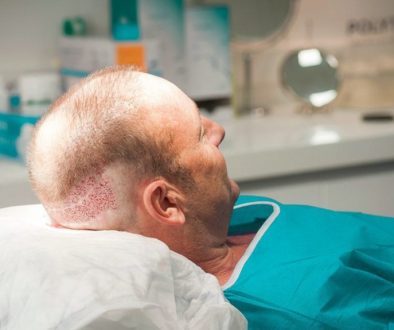How is Shock Loss Minimized During A Hair Transplant Procedure?
This question was posed by a hair loss sufferer on our hair restoration forum and answered by Dr. Michael Beehner of Saratoga Springs, NY who is one of our recommended hair restoration physicians. His professional answer is below.
 Most of the factors that we think have to do with “shock loss” of native hair following a hair transplant procedure all take place at the time of hair restoration surgery. The two most important things are: one, the VULNERABILITY of the hairs that exist on top, and two, the AGGRESSIVENESS with which the recipient sites are made. If a large percentage of those remaining native hairs are “miniaturized” (limited length and decreased diameter; ie: “wispy”) they are much more likely to be shocked than a strong terminal hair is. When recipient sites are aggressively made, whether it is the closeness with which they are made or the width, depth, or length of the individual sites, native hairs can be lost either by taking a “direct hit” by the instrument used or simply as a “shock” reaction to having all these cumulative injuries occurring so close to them.
Most of the factors that we think have to do with “shock loss” of native hair following a hair transplant procedure all take place at the time of hair restoration surgery. The two most important things are: one, the VULNERABILITY of the hairs that exist on top, and two, the AGGRESSIVENESS with which the recipient sites are made. If a large percentage of those remaining native hairs are “miniaturized” (limited length and decreased diameter; ie: “wispy”) they are much more likely to be shocked than a strong terminal hair is. When recipient sites are aggressively made, whether it is the closeness with which they are made or the width, depth, or length of the individual sites, native hairs can be lost either by taking a “direct hit” by the instrument used or simply as a “shock” reaction to having all these cumulative injuries occurring so close to them.
The THICKNESS OF THE SCALP is another key factor. The plexus of key arterial vessels that network to supply blood supply to the scalp lay deep in the scalp over the “galea” layer (the thick gristle at the bottom) deep in the subcutaneous fatty layer. It this subcut layer is nonexistent, then it is hard for the doctor to avoid injuring those deeper vessels, even with tumescence.
The amount of EPINEPHRINE (ADRENALINE) used in the tumescence solutions is a key factor also. We use this to control the bleeding during scalp surgery, but if too great a concentration is used, it clamps up the arterial supply during surgery to some degree and can help provoke a temporary shock and effluvium reaction to the hair.
And, last but not least, there is INDIVIDUAL PATIENT VARIATION in this whole thing. No two people react the same to the identical same hair transplant surgery. Some shock easy, particularly females, and some don’t seem to shock at all. I personally feel that EVERY patient to some small degree experiences some shock loss, but it isn’t enough to be seen by the naked eye.
If one of the ten main arteries supplying the scalp gets transected during harvesting of the donor strip, that certainly has to play some role. Examining each patient’s scalp with magnification (30x or 50x) and communicating to him or her the degree of miniaturization and risk for shock may help alleviate the later surprise at its actually happening. Whether laser therapy will play a role in this regard is still unproven and I remain skeptical at this time.
How do we prevent shock loss from hair transplantation?
- We use the minimal concentration of epinephrine we can.
- We limit the depth of our recipient sites with depth-control holders for our needles. We know that coronal (perpendicular) alignment of slits that are a little long (over 2mm probably) in the central areas is a risk for later necrosis or poor hair growth, since the vessels supplying the skin rise up perpendicularly and these are sheered by such sites.
- Many of us empirically, based on anecdotal cases, recommend Rogaine for a month before and after our cases. I only do this for all females and for those men who have had a lot of surgery in the past, especially if they have had scalp reductions or have a thin scalp. If the scalp is thin, the surgeon has to “let up” on the density of planting to allow blood supply to get to each follicular unit graft.
The bottom line is we have no “magical” way to prevent shock loss, but with common sense we can keep it to an absolute minimum.
Mike Beehner, M.D.
—
Bill
Associate Publisher of the Hair Transplant Network and the Hair Loss Learning Center
View my Hair Loss Weblog
Technorati Tags: hair loss, shock loss, native hair, hair transplant, hair restoration, terminal hair, recipient sites, temporary shock, effluvium, hair transplant surgery, hair transplantation, necrosis, hair growth, follicular unit graft



